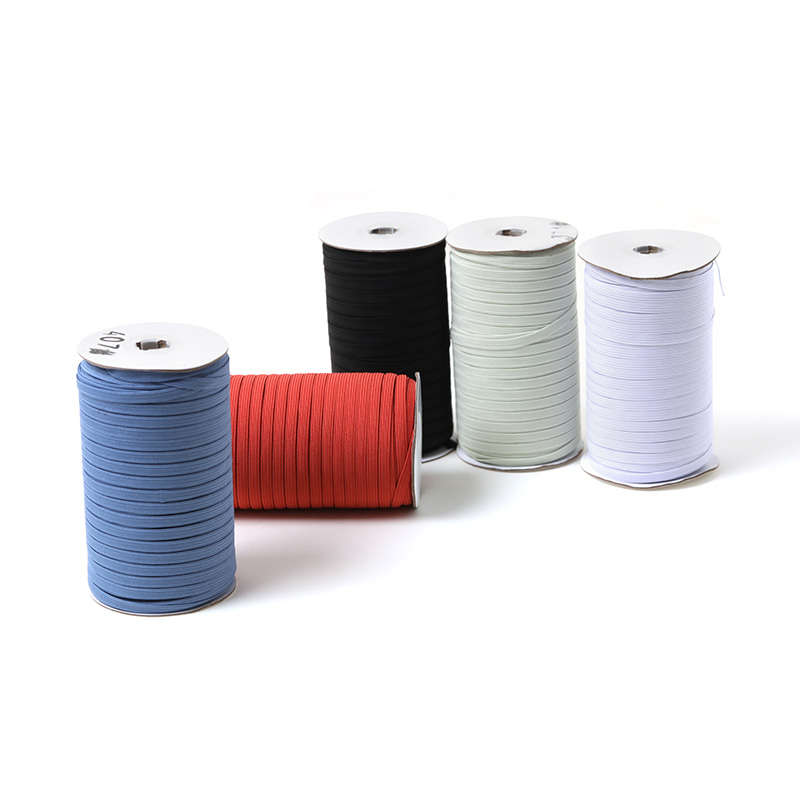Industry
 By Admin
By Admin
How To Cut And Sew Webbing Without Fraying
Working with webbing is common in many sewing and crafting projects, from making bags and belts to producing adjustable elastic straps for masks. One challenge that often comes up is preventing the edges of webbing from fraying after cutting. If you've ever struggled with unraveling edges, you know how frustrating it can be to keep a clean, professional finish. This article shares practical tips on how to cut and sew webbing without fraying, so your projects maintain durability and appearance.

Understanding the type of webbing you are working with is important. Webbing comes in various materials such as nylon, polyester, cotton, and elastic blends. When cutting, use a sharp pair of scissors or a rotary cutter to ensure a clean edge. Dull blades can cause jagged cuts that are more likely to fray. For example, if you're working on adjustable elastic straps for masks, clean cuts will help maintain the integrity of the strap and prevent loose threads that could interfere with comfort and usability.
One common technique to prevent fraying is heat sealing. This works especially well for synthetic webbings like nylon or polyester. After cutting the webbing, carefully pass the edge near a flame source such as a lighter or candle, but do not let it catch fire. The heat melts the fibers slightly, sealing the edges and preventing them from unraveling. This technique can also be applied when working with round elastic cord for face masks. Since these cords are often made of synthetic fibers, heat sealing ensures they stay intact through repeated use and washing.
For natural fiber webbing such as cotton, heat sealing is less effective. Instead, consider sewing the edges or using fabric glue to secure the ends. When sewing, folding the edge of the webbing slightly before stitching helps protect the fibers. Stitching close to the edge with a zigzag or overlock stitch can also lessen fraying. This is useful when incorporating soft elastic cord into your projects, where the edges need to remain smooth to avoid skin irritation, especially in face masks.
In addition to edge sealing, the way you sew webbing affects how it holds up over time. Use a strong, durable thread and adjust your sewing machine's tension appropriately. Double stitching or reinforcing stress points can increase the lifespan of adjustable elastic straps for masks, which endure constant stretching and pulling. If you are combining webbing with round elastic cord for face masks, ensure your stitches do not overly restrict the elastic's stretch properties while keeping the attachment secure.
Sometimes, finishing the webbing edges with binding or hemming adds an extra layer of protection against fraying. While this requires additional sewing steps, it can improve the overall look and durability of your item. When working with soft elastic cord, pairing it with well-finished webbing edges prevents discomfort and maintains a neat appearance. Whether you're making custom straps or adjusting existing ones, these finishing touches make a noticeable difference.
If you're using adhesive products, fabric glue or fray check solutions are alternatives to sewing or heat sealing. They help lock fibers in place and reduce fraying, especially on delicate webbings. Apply sparingly and allow drying time before handling. This method can be handy when quick fixes are needed for adjustable elastic straps for masks or when trimming round elastic cord for face masks to length.
When cutting webbing to size, always measure twice before cutting. Having a precise cut reduces waste and the need for repeated trimming, which can increase fraying risk. If you find your webbing edges fray after cutting and sealing, consider adding an extra line of stitching or using a different sealing method. For soft elastic cord, trimming cleanly and sealing edges ensures your finished products are comfortable and reliable.
Finally, regular care and maintenance help extend the life of your webbing items. Washing webbing with mild detergents and avoiding harsh chemicals prevents weakening of fibers. When dealing with adjustable elastic straps for masks, proper care keeps elasticity intact and prevents premature wear. Likewise, taking care of round elastic cord for face masks by storing it properly and avoiding excessive stretching preserves its usability.
Cutting and sewing webbing without fraying involves clean cutting, edge sealing, careful sewing, and proper finishing. Whether your project includes round elastic cord for face masks, soft elastic cord, or adjustable elastic straps for masks, applying these methods can enhance durability and appearance. Taking the time to properly prepare and finish webbing edges will result in a neat, long-lasting product.



 English
English Español
Español عربى
عربى Tiếng Việt
Tiếng Việt

